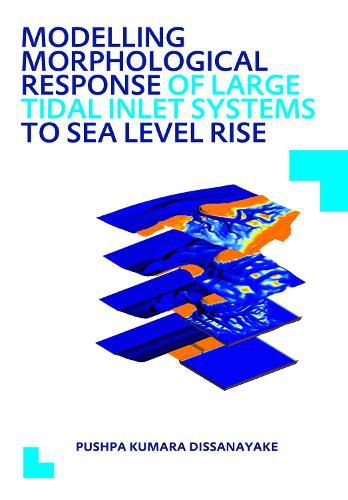Readings Newsletter
Become a Readings Member to make your shopping experience even easier.
Sign in or sign up for free!
You’re not far away from qualifying for FREE standard shipping within Australia
You’ve qualified for FREE standard shipping within Australia
The cart is loading…






The research presented in this work qualitatively investigates the morphodynamic response of a large tidal inlet/basin system to future relative sea level rise (RSLR) using the state-of-the-art Delft3D numerical model. Understanding the potential impacts of RSLR on these systems is a prerequisite for their sustainable management due to their rich bio-diversity and the increase in economic activities and local communities in recent decades.The adopted approach used a highly schematised model domain analogous to the Ameland inlet in the Dutch Wadden Sea. Model simulations were undertaken applying tidal and wave boundary forcings with three IPCC projected RSLR scenarios (no RSLR, low RSLR and high RSLR). Predicted inlet evolution indicated a channel/shoal pattern typically observed at the Ameland inlet. RSLR enhances the existing flood-dominance of the system leading to erosion on the ebb-tidal delta and accretion in the basin. Under the no RSLR case, resulting bed evolution of the process-based model (Delft3D) tends to agree with empirical-equilibrium relations of the ASMITA model. Application of the low RSLR scenario resulted in quite stable tidal flat evolution. Model simulations with the high RSLR scenario indicated disappearing the tidal flats over time and turning the system into a lagoon. Applying nourishment hardly compensated the RSLR induced sediment demand of tidal flat evolution.
$9.00 standard shipping within Australia
FREE standard shipping within Australia for orders over $100.00
Express & International shipping calculated at checkout
The research presented in this work qualitatively investigates the morphodynamic response of a large tidal inlet/basin system to future relative sea level rise (RSLR) using the state-of-the-art Delft3D numerical model. Understanding the potential impacts of RSLR on these systems is a prerequisite for their sustainable management due to their rich bio-diversity and the increase in economic activities and local communities in recent decades.The adopted approach used a highly schematised model domain analogous to the Ameland inlet in the Dutch Wadden Sea. Model simulations were undertaken applying tidal and wave boundary forcings with three IPCC projected RSLR scenarios (no RSLR, low RSLR and high RSLR). Predicted inlet evolution indicated a channel/shoal pattern typically observed at the Ameland inlet. RSLR enhances the existing flood-dominance of the system leading to erosion on the ebb-tidal delta and accretion in the basin. Under the no RSLR case, resulting bed evolution of the process-based model (Delft3D) tends to agree with empirical-equilibrium relations of the ASMITA model. Application of the low RSLR scenario resulted in quite stable tidal flat evolution. Model simulations with the high RSLR scenario indicated disappearing the tidal flats over time and turning the system into a lagoon. Applying nourishment hardly compensated the RSLR induced sediment demand of tidal flat evolution.